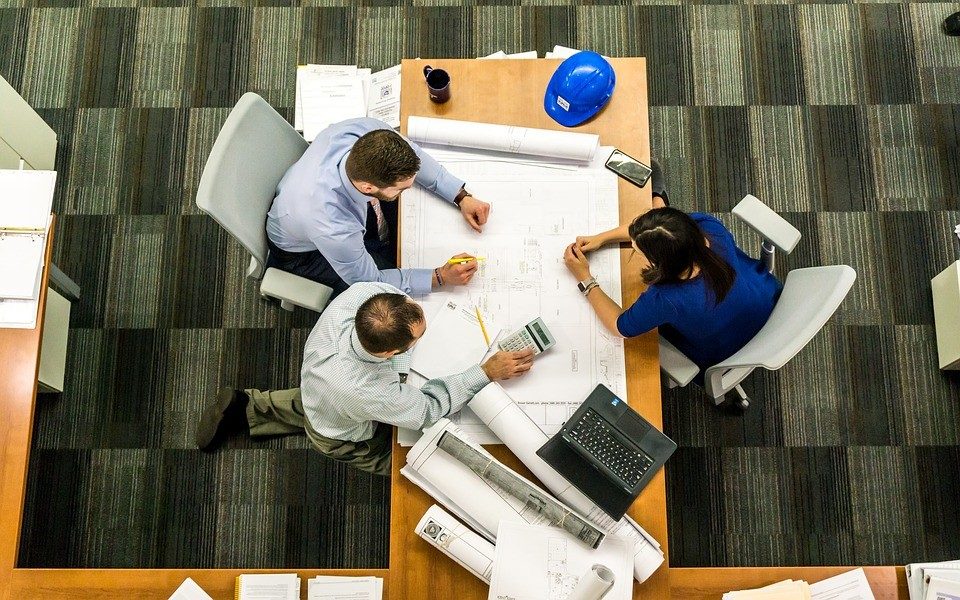Building your dream home is a unique experience.
It requires you to be honest with yourself about your family’s current and future needs, and gives you to the chance to personalize everything to your taste. For most homeowners, this is a once-in-a-lifetime opportunity.
The building process shares parallels with creating a piece of art in that it will change and grow organically as it is created. Often, seemingly great ideas will fail and you will have to return to the drawing board. This can be frustrating, especially when adding elements like green building into the mix, but, at the end of the process, your home will be uniquely yours to enjoy.
The first day you walk into your new home will be the last day of a long design and construction process. How you feel at the end of that process will set the tone for how you and your family perceive the new house where you are preparing to spend years. Paying attention to a few basic mantras, tricks, and hard-learned lessons before beginning this process can make the experience of creating your dream home much more enjoyable.
Perfectionism vs. realism
The first tip is also the hardest to swallow: perfection is impossible in the reality in which we live.
Hard to hear, right? You are about to spend thousands of dollars on this project, and of course you expect the product to live up to your greatest expectations.
But, at the end of the day, it is critical for all parties involved in the building process to recognize that design and construction are bound by reality’s limitations: budget, land, the laws of thermodynamics, and a pesky thing called gravity.
This is not to say you should back down from seeking quality and a design that meet your wants and needs. However, it can reduce stress to go in with the understanding that compromise will be necessary.
Because nothing will ever be perfect, don’t get hung up on minute details while neglecting major design elements.
Your definition of green
Tip two: define what green building means to you. Write it down. Is it energy efficiency, locally sourced materials, low-embodied energy materials, net-zero, healthy indoor air quality or some combination of these or other values?
There are so many versions of green building out there. While this is wonderful, it complicates the process of building “green.” You cannot tell your builder you want a green home and expect them to be thinking of the same elements as you.
The definition you create will act as your mission statement during the process. It will not only make it clear to everyone involved what the big picture goal is, but also will help you decide the design elements on which you refuse to compromise.
To get you started, I’ll share my personal definition: “A green home is durable, energy-efficient, and healthy to live in. It has what my family and I need to live comfortably, and doesn’t waste space or resources.”
Certification determination
Creating your own definition of green building leads to another question for consideration: Is getting your home “green certified” important to you?
There are many great green-building certifications by both national and regional groups. Having one of these certifications can help validate your accomplishment of sustainability goals, and provide your builder guidance on how to achieve them.
However, when deciding to get a green certification, it is important to consider your personal green goals, and how they will mesh with the reality of your build.
How do the goals of a certification align with your definition of green? Does your builder have experience with any particular programs, or are they willing to invest the time into learning what each program entails? Are you willing to compromise on your other design or financial goals to meet the requirements of green certifications?
It is certainly possible to build a sustainable, and green home without getting a certification. Although, determining your own criteria for every green building aspect might prove to be a mountain of additional work. And you will miss out on having a third party rater verify that the house is being built as intended. At the end of the day, the choice is something you should consider with your builder.
Drawing the line on design

Photo Courtesy of Pixabay.com
It is important to realize the level of interconnection, but do not become obsessed with trying to master it. Go back to your green definition, your lists of wants and needs.
Accept that something will probably get the short end of the stick by the end of the process, or else you might stay in the design cycle indefinitely. Plan on what these things will be, so you aren’t dismayed when it happens.
Understand what the financial cost might end up being if you don’t back down on a single thing or keep spinning through the design cycle.
Trust your team
My next mantra for you is: If I try and do everything myself, I will become overwhelmed.
Trust your builder’s experience; they make these building decisions every day and have seen the consequences of each.
Invest your time into researching the design elements and green building aspects most important to you, and then take your builder’s advice in areas that you have not labeled “priority.”
They are experts and you should feel comfortable using their consultation. If you try and take on the whole project by yourself and do not trust your team, you will quickly become burned out.
During the construction phase of the house, above all else, remain calm.
The majority of building projects will encounter some sort of delay, and it is natural.
It is also critical to remember that you are probably not an expert on everything. If you see something you don’t understand or agree with, don’t suddenly start confusing subcontractors by giving different instructions from your builder. Consult your builder immediately to get clarification on why something is being done the way it is and tell them your concerns.
If your builder understands your expectations and is on board with your goals, they will be your agent toward the subcontractors. Your builder will ultimately hold the subcontractors liable for the quality of work you expect.
Remember that every time you cause a delay in the work, you are costing yourself extra dollars.
Realizing the green dream
These hints on building your green home are not intended to coerce you into giving up control, or accepting lower standards. They are merely suggestions on how not to create unnecessary stress during the process.
Turning your dream into a reality will mean accepting the rules of our reality. Stand strong on what goals are important to you, and don’t lose sight of the bigger picture. This should be a unique, fun and educational process.
It is possible to get your green home and be happy the first day you walk into it. It just takes some simple rules, clear communication of expectations, and stress management to make it happen. Happy building!
A project coordinator at Deltec Building Co., Brenton Faircloth has worked to provide himself with a diverse background of experiences. His repertoire includes earning a master’s degree in technology, being a pool-pump mechanic, serving as an assistant to a State Congressman, and working for a builder. Above all, he has learned that Applied Love is the best science to master.
You can also view this article as it was originally published on page 44 of the 2017-18 edition of the directory.


